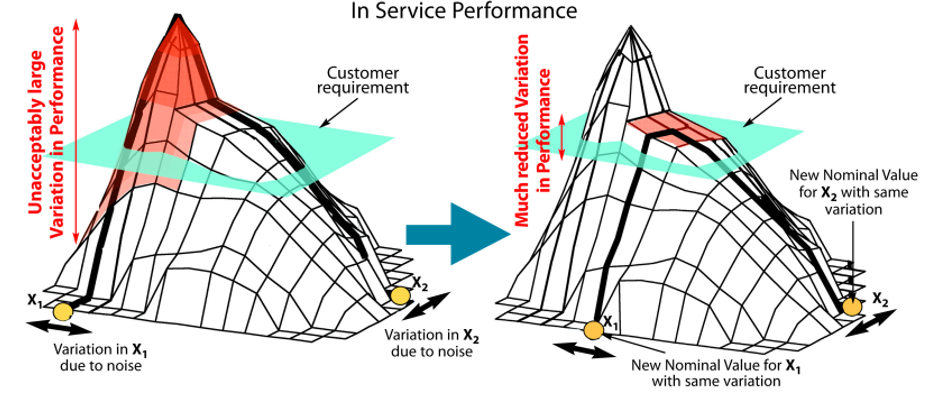Classical robust optimization: Difference between revisions
(Created page with "Author Names: Andre Ramirez-Cedeno <br/> Steward: Fengqi You, Dajun Yue <br/> ==Introduction and History== Robust optimization is a subset of optimization theory that deals...") |
No edit summary |
||
| Line 1: | Line 1: | ||
This web page is a duplicate of https://optimization.mccormick.northwestern.edu/index.php/Classical_robust_optimization | |||
Author Names: Andre Ramirez-Cedeno <br/> | Author Names: Andre Ramirez-Cedeno <br/> | ||
Steward: Fengqi You, Dajun Yue <br/> | Steward: Fengqi You, Dajun Yue <br/> | ||
Latest revision as of 10:35, 1 April 2022
This web page is a duplicate of https://optimization.mccormick.northwestern.edu/index.php/Classical_robust_optimization
Author Names: Andre Ramirez-Cedeno
Steward: Fengqi You, Dajun Yue
Introduction and History
Robust optimization is a subset of optimization theory that deals with a certain measure of robustness vs uncertainty. This balance of robustness and uncertainty is represented as variability in the parameters of the problem at hand and or its solution [1]. In robust optimization, the modeler aims to find decisions that are optimal for the worst-case realization of the uncertainties within a given set [2]. Robust optimization dates back to the beginning of modern decision theory in the 1950’s. It became a discipline of its own in the 1970’s with paralleled development in other technological fields.
Uncertainty
Sources of uncertainty could be due to at least three different conditions [3].
1. Ignorance - such as not knowing exactly how much oil is in a reserve
2. Noise - such as measurement errors, or incomplete data
3. Events that have not yet occurred - such as future product demand
What is Robustness?
Robustness refers to the ability of a system to cope with errors during an execution. It can also be defined as the ability of an algorithm to continue operating despite abnormalities in calculations. Most algorithms try to find a balance between robustness and efficiency/execution time [4].
Applications
Robust Optimization has traditionally been applied in statistics, but is now applied in;
1. Operations research
2. Control theory
3. Finance and Portfolio management
4. Logistics
5. Manufacturing engineering
6. Chemical engineering (Oil field developing)
7. Medicine
8. Computer science
In engineering problems, these formulations often take the name of "Robust Design Optimization" or "Reliability Based Design Optimization"
Simple Mathematical Example
This problem is a simple example of a robust optimization problem. The last clause; “for all (c,d) ϵ P” makes it a robust optimization problem because it implies that for a pair (X,Y) to be acceptable, the constraint cX + dY <= 15 must be satisfied for all values of (c,d) including the worst (c,d) pair that maximized the value of cX + dY for the given values of (x,y). For this example, P is simplified to a finite set meaning that for each (c,d) within the set, there is a constraint cX + dY <= 15.
Engineering Design Example
Rolls-Royce [5]
Robust design allows variation in the design process and the consideration of the appropriate selection of the nominal design point.
Step 1: Define – Understand what is important to the client and formulate problem in engineering language. Choose design concepts with variation in mind.
Step 2: Characterize – Generate measurable “critical to quality” (CTQ’s) criteria. For each CTQ, understand the possible sources of variation and measure the effects of variation.
Step 3: Optimize – For each CTQ, choose a strategy to reduce the effects of variation.
Step 4: Verify – Use knowledge of variation from previous steps to determine its effects in construction and design plan.
The Variance Transmission equation is given by:
=
References
[1] Wikipedia page for Robust Optimization
[2] http://www.robustopt.com/references/Robust%20Optimization%20Made%20Easy%20with%20ROME.pdf
[3] J. Rosenhead. Robustness analysis: keeping your options open. In J. Rosenhead, editor, Rational analysis for a problematic world: problem structuring methods for complexity, uncertainty and conflict, pages 193–218, Chichester, UK, 1989. John Wiley & Sons.
[4] http://www.stanford.edu/~bakerjw/Publications/Baker%20et%20al%20(2008)%20Robustness,%20Structural%20Safety.pdf
[5] http://web.stanford.edu/group/uq/events/optimization/2011/3-rollsroyce.pdf



